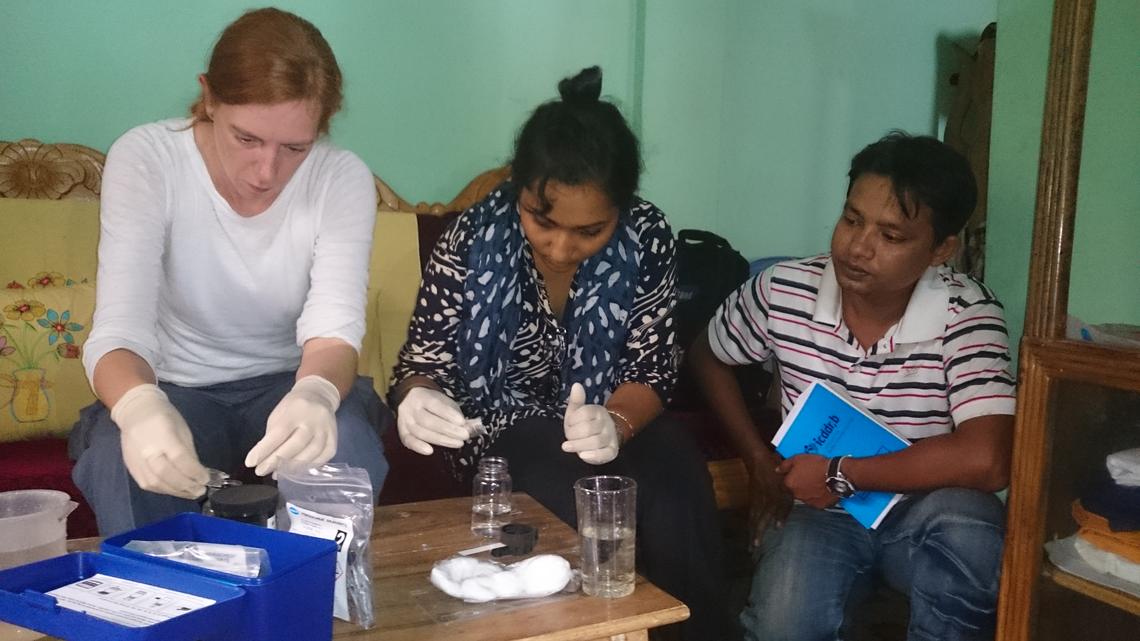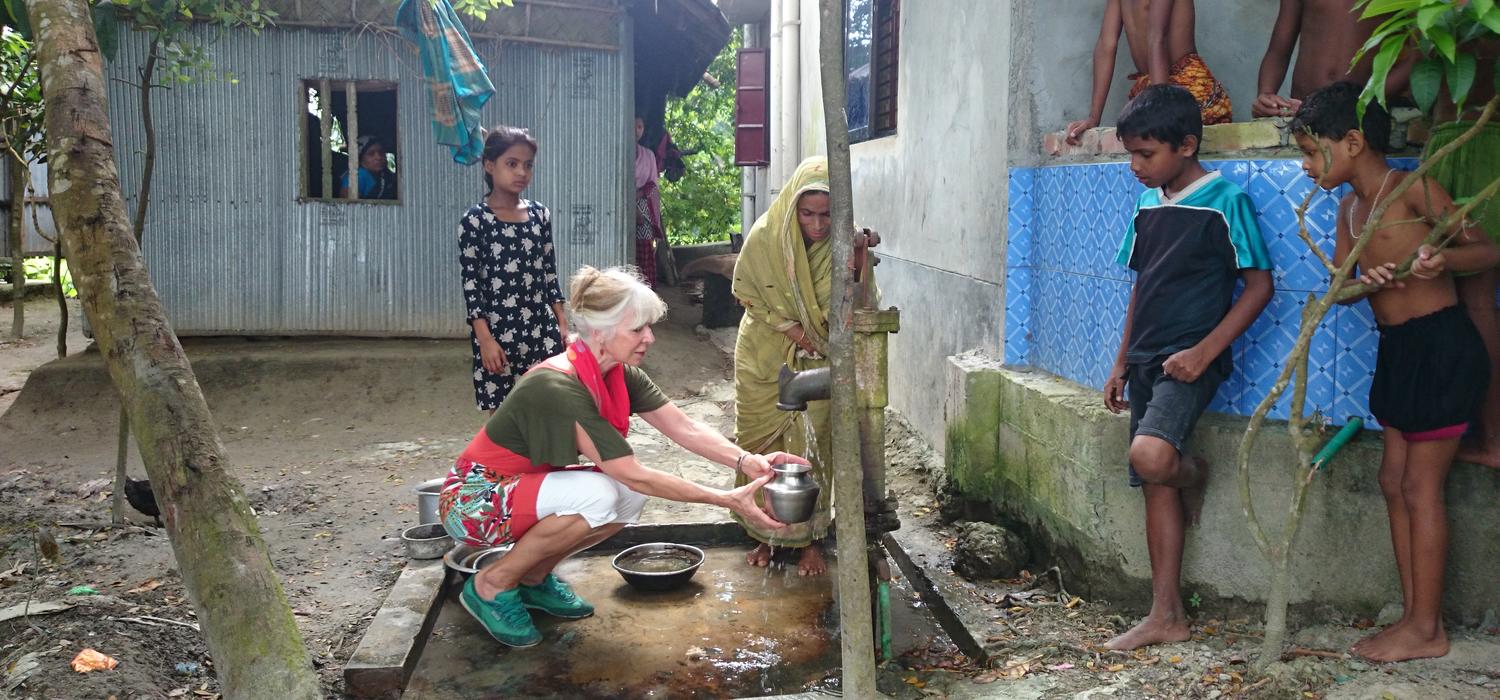
Regina Krohn, left, tests water samples in a Bangladesh village. Between 2000 and 2010, 77 million Bangladeshis were exposed to arsenic from contaminated well water.
Dec. 2, 2015

One in every 18 deaths in Bangladesh is related to drinking well water that’s contaminated with naturally occurring arsenic, but veterinary medicine researchers think eating lentils from Canada could help solve the problem of the worst case of mass poisoning in history.
The lentils, grown in Saskatchewan, have high levels of selenium; another naturally occurring substance that can cause its own form of poisoning. Decades ago, veterinarians figured out they could use arsenic-based medications to treat cattle poisoned from eating plants with high levels of selenium.
Clinical trial uses lentils both high and low in selenium to analyze samples
When both arsenic and selenium are present, they bind together in the blood and can’t move into other organs and tissues and cause damage. Instead, the elements are metabolized and excreted through the liver and kidneys.
After successful animal trials, researchers from the Faculty of Veterinary Medicine (UCVM) have started clinical trials with about 80 families in Bangladesh. Some of the 400 people will eat lentils low in selenium and others will eat Saskatchewan lentils that are naturally high in selenium.
“It’s a three-year project,” says Judit Smits, professor of ecosystem and public health at UCVM. “We’ll have thousands and thousands of samples, some of which are analyzed in Bangladesh with our partners there, and some will be analyzed in our labs here.”

Regina Krohn, left, tests water samples in a Bangladesh village. Between 2000 and 2010, 77 million Bangladeshis were exposed to arsenic from contaminated well water.
Researchers observing health outcomes in families eating lentils
In the meantime, researchers are watching the families closely.
“Our village health-care workers are in touch with every single family several times a week doing health checks and asking who has had respiratory or other problems so we know the health status perceived by the family as we go along,” says Smits.
Each family will eat the lentils, a daily staple of the Bangladeshi diet, for six months. Regina Krohn, veterinary medicine research assistant says, “after three months, there will be physical examinations and samples and we hope to see improved health outcomes, with an increase in excreted arsenic in the urine and feces and a decrease of levels in the hair."
Whole food solution is cheaper than replacing water supply and medication
A longer term goal is to improve the agricultural efforts in Bangladesh to increase the yield and micronutrient content of local crops
The deep tube wells were dug in the 1970s to eradicate the serious health problems from people drinking contaminated surface water. But between 2000 and 2010, 77 million Bangladeshis were exposed to arsenic from the well water. Arsenic poisoning can lead to cancer, skin lesions, lung problems, hypertension, diabetes, cardiovascular and central nervous system disorders.
If eating selenium in lentils is effective at neutralizing the arsenic — a “whole food solution” — it would be a far cheaper solution than replacing the water supply and more appealing than trying to get millions of people to take selenium pills every day of their lives.
Findings could also spur a new industry for a developing country. “A longer term goal is to improve the agricultural efforts in Bangladesh to increase the yield and micronutrient content of local crops,” says Krohn.
“They are growing lentils in Bangladesh but not enough to be self-sustainable.”